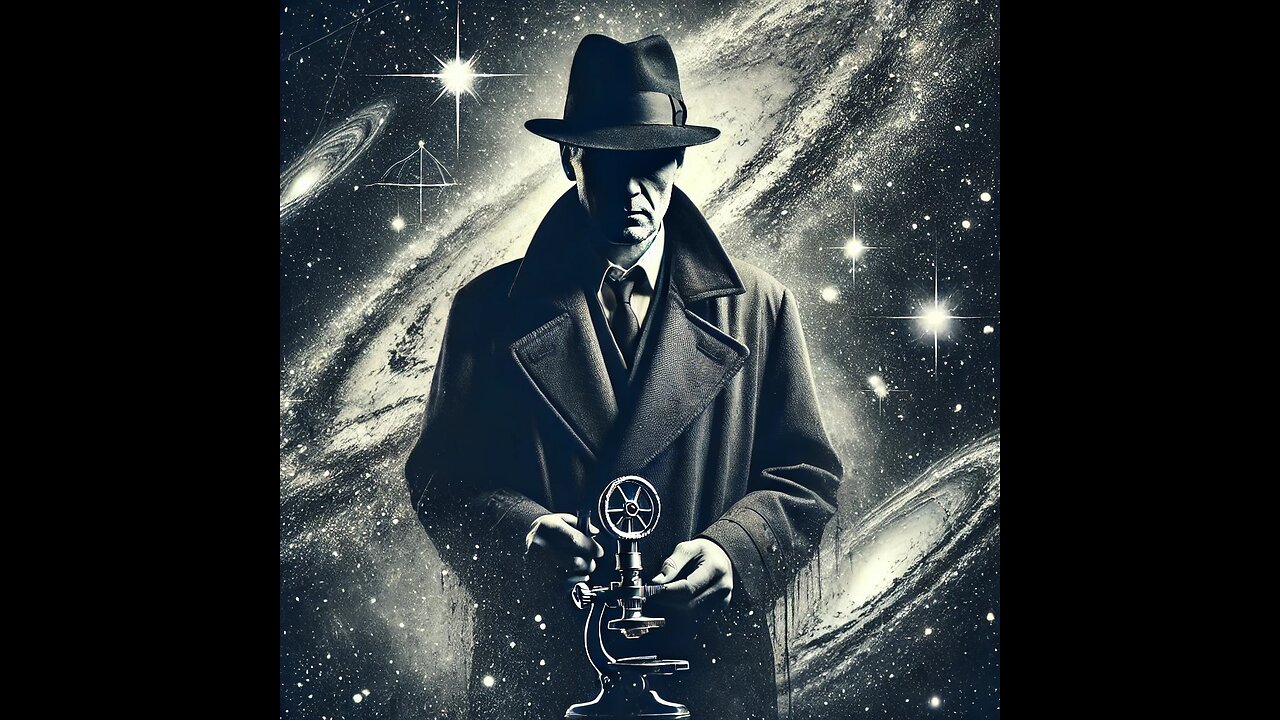Premium Only Content

Characterizing Atomic Complexity, Darwinian Universal ep4
Darwinian Universal is a cosmology and physics theory that aims to provide a comprehensive explanation of the universe's origin and evolution, as well as the fundamental principles governing its behaviour. This theory incorporates elements of natural selection and evolution, as well as concepts from various fields of physics, such as quantum mechanics and general relativity.
The Darwinian Universal theory posits that the universe is a dynamic and evolving system, in which structures and processes emerge and change over time in a manner analogous to biological evolution. This includes the formation of galaxies, stars, planets, atoms and the emergence of life itself.
The theory also proposes that the fundamental constants and laws of physics may not be fixed and unchanging but could have evolved and fine-tuned over time through a process of natural selection. This could potentially explain the apparent fine-tuning of the universe, as well as the emergence of complex structures and phenomena.
Characterizing Atomic Complexity and Fine-Tuning
In the grand tapestry of nature, interdependencies are the threads that weave complexity. In biology, cells—products of billions of years of Darwinian evolution—function not in isolation, but as integral parts of multicellular organisms. From the microscopic organelles within a cell to the intricate societies formed by animals, mutual dependencies are the hallmark of life’s organization. These interwoven relationships, fine-tuned and delicately balanced, give rise to collective behaviors far greater than the sum of their parts.
Such dependencies, central to Darwinian evolution, might seem unlikely to arise by mere chance. And yet, when we turn our gaze to the realm of physics and cosmology, we find a striking parallel. The theme of interdependence, so pervasive in biology, also permeates the fundamental workings of the universe. But how?
Atomic physics reveals a hierarchical structure where each level of organization relies on the stability and properties of the levels beneath it. At the most fundamental level, quarks and gluons combine to form protons and neutrons, which then capture electrons to create atoms. These atoms, in turn, form molecules through precise chemical bonds. Each of these interactions is finely tuned, with the outcome at each level dependent on the exact properties of the particles and forces involved.
The complexity doesn’t stop there. Atomic properties—like atomic mass—play a critical role in the formation of cosmic structures. From the birth of stars to the formation of galaxies, these finely tuned characteristics enable the universe to evolve into the structured cosmos we observe. Consider the process of stellar fusion: atoms must generate just the right amount of heat and pressure to counteract the force of gravity, allowing stars to shine. Why should an atom, so tiny and seemingly insignificant, have any influence on the vast scales of cosmology? And yet, time and again, we see that atomic properties are crucial to the very fabric of the universe.
The standard model of cosmology, rooted in the Big Bang’s instantaneous origin, provides us with a descriptive framework but leaves us with profound questions. It can describe the outcomes but struggles to explain the underlying reason for these intricate interdependencies. Why do these relationships, which span such diverse scales, exist at all? Why does an atom’s behavior matter on the scale of stars and galaxies?
These patterns, this pervasive complexity, suggest more than mere coincidence. The remarkable interdependencies seen in physics and cosmology echo the characteristics of Darwinian systems. In Darwinian evolution, complex traits and relationships emerge not by chance, but through the process of natural selection—through the survival and propagation of advantageous traits over time.
Could it be that the universe, too, bears a Darwinian fingerprint? That the intricate web of dependencies we see in the atomic and cosmic realms is the result of a similar process? Just as biological systems are honed and perfected over time, could the physical laws and structures of the universe have evolved to optimize stability, complexity, and the emergence of life?
This possibility challenges us to rethink our understanding of the cosmos. If the universe itself is subject to a form of Darwinian evolution, then the interdependencies we observe are not just random occurrences—they are the product of a profound organizational principle. This principle, much like natural selection in biology, could be responsible for the finely tuned complexity we see in everything from atoms to galaxies.
As we delve deeper into the mysteries of the universe, we are reminded that our quest is not just about describing what we see, but about understanding why these patterns exist at all. The parallels between biology and physics suggest that we may be on the verge of uncovering a deeper truth—a truth that connects the evolution of life with the very structure of the universe itself.
-
 LIVE
LIVE
Major League Fishing
4 days agoLIVE! - Bass Pro Tour: Stage 2 - Day 4
264 watching -
 56:24
56:24
Russell Brand
1 day agoEddie Gallagher: War, Betrayal & Fighting the System
97.4K12 -
 11:21
11:21
TimcastIRL
7 hours agoGOP Rep Says TWO SHOOTERS In JFK Assassination As FBI Uncovers TROVE Of Secret Documents
106K155 -
 1:04:55
1:04:55
Bare Knuckle Fighting Championship
4 days agoBKFC ITALY PRESS CONFERENCE | LIVE!
54.8K6 -
 10:04
10:04
Space Ice
5 hours agoThe Movie Silent Hill Is Like Resident Evil Without The Good Parts - Worst Movie Ever
31.3K11 -
 5:49
5:49
Hannah Barron
1 day agoRedneck Euro Mount
26.1K20 -
 32:34
32:34
hickok45
10 hours agoSunday Shoot-a-Round # 268
20.2K15 -
 27:33
27:33
The Finance Hub
20 hours ago $13.47 earnedBREAKING: ALINA HABBA JUST DROPPED A MASSIVE BOMBSHELL!!!
57.8K103 -
 40:23
40:23
PMG
1 day ago $1.57 earnedHannah Faulkner and Dr. Michael Schwartz | EXPOSING BIG PHARMA
33.3K3 -
 18:55
18:55
GBGunsRumble
22 hours agoGBGuns Range Report & Channel Update 15FEB25
24K2